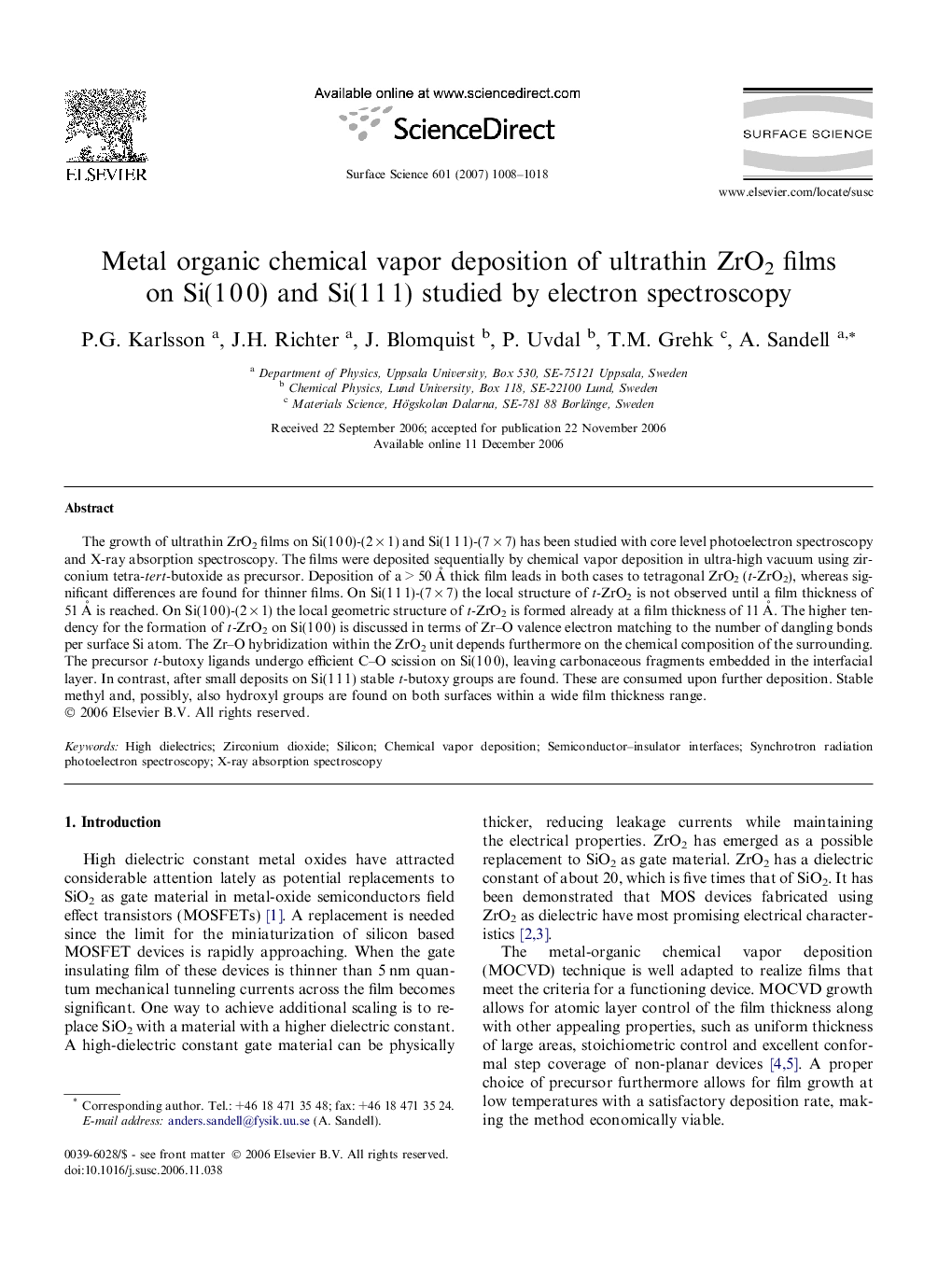| Article ID | Journal | Published Year | Pages | File Type |
|---|---|---|---|---|
| 5425207 | Surface Science | 2007 | 11 Pages |
Abstract
The growth of ultrathin ZrO2 films on Si(1 0 0)-(2 Ã 1) and Si(1 1 1)-(7 Ã 7) has been studied with core level photoelectron spectroscopy and X-ray absorption spectroscopy. The films were deposited sequentially by chemical vapor deposition in ultra-high vacuum using zirconium tetra-tert-butoxide as precursor. Deposition of a > 50 Ã
thick film leads in both cases to tetragonal ZrO2 (t-ZrO2), whereas significant differences are found for thinner films. On Si(1Â 1Â 1)-(7Â ÃÂ 7) the local structure of t-ZrO2 is not observed until a film thickness of 51Â Ã
is reached. On Si(1Â 0Â 0)-(2Â ÃÂ 1) the local geometric structure of t-ZrO2 is formed already at a film thickness of 11Â Ã
. The higher tendency for the formation of t-ZrO2 on Si(1Â 0Â 0) is discussed in terms of Zr-O valence electron matching to the number of dangling bonds per surface Si atom. The Zr-O hybridization within the ZrO2 unit depends furthermore on the chemical composition of the surrounding. The precursor t-butoxy ligands undergo efficient C-O scission on Si(1Â 0Â 0), leaving carbonaceous fragments embedded in the interfacial layer. In contrast, after small deposits on Si(1Â 1Â 1) stable t-butoxy groups are found. These are consumed upon further deposition. Stable methyl and, possibly, also hydroxyl groups are found on both surfaces within a wide film thickness range.
Keywords
Related Topics
Physical Sciences and Engineering
Chemistry
Physical and Theoretical Chemistry
Authors
P.G. Karlsson, J.H. Richter, J. Blomquist, P. Uvdal, T.M. Grehk, A. Sandell,
